Death, rebirth, and continuity of mind
The question of what happens at death has preoccupied human thought across cultures and epochs. In Buddhist philosophy, particularly as taught by Siddhartha Gautama, death is not seen as the annihilation of an eternal self, nor as the transmigration of a fixed soul, but as part of a continuous process of conditioned arising (paṭiccasamuppāda). This perspective offers a distinct alternative to both materialist annihilationism and metaphysical eternalism. Modern psychology and neuroscience, while refraining from metaphysical claims, also provide frameworks for understanding continuity without requiring an enduring self. In this post, we explore how Buddhist ideas of death and rebirth intersect with contemporary understandings of mind and memory.
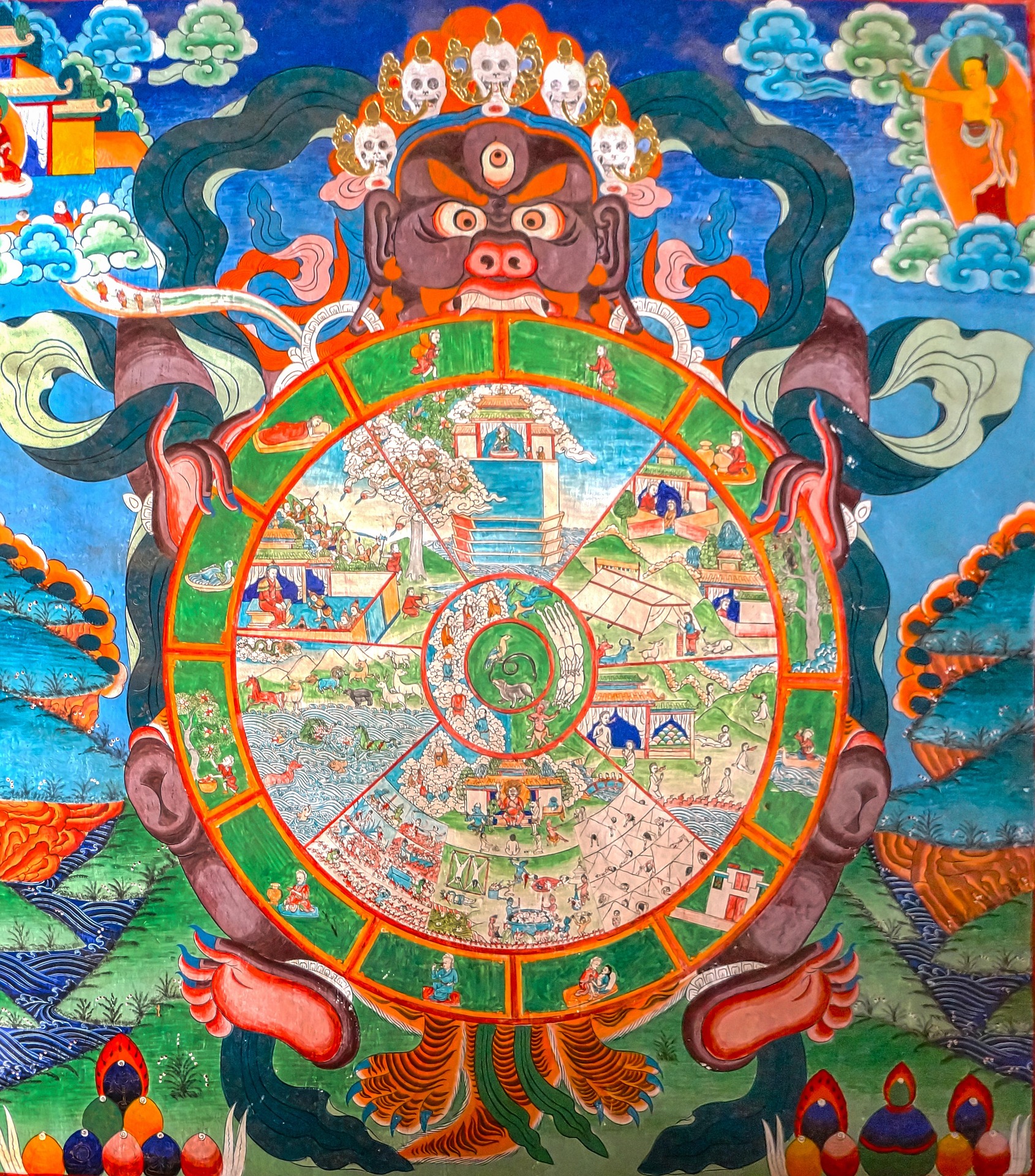
Wheel of Life, from a Chinese temple. The wheel depicts the cycle of birth, death, and rebirth (saṃsāra), illustrating the Buddhist concept of continuity without a permanent self. Source: Pixabayꜛ (license: Pixabay licenseꜛ).
Buddhist view of death and rebirth
In early Buddhist teachings, particularly the Pāli Canon, Siddhartha Gautama rejects both the view that the self is annihilated at death (ucchedavāda) and the view that an immutable self persists eternally (sassatavāda). Instead, existence is described as a flow of conditioned phenomena, without a stable, independent entity at its core.
Rebirth (punabbhava) occurs not because a soul transmigrates, but because karmic formations (saṅkhāra) and craving (taṇhā) condition the arising of a new set of aggregates (khandha). In the Mahātaṇhāsaṅkhaya Sutta (MN 38), Siddhartha explains that consciousness does not pass over from one existence to another like a traveler changing vehicles; rather, new consciousness arises dependent upon karmic causes and conditions.
Thus, continuity exists without identity: The flame of a candle can light a new candle, yet it is not the same flame, nor entirely different.
Continuity of mind without a permanent self: The neuroscientific perspective
Contemporary neuroscience provides several complementary models that illuminate how continuity of experience can emerge without requiring a permanent self. These approaches do not support metaphysical claims but offer mechanistic accounts of identity as an ongoing, dynamic, and reconstructive process. The following discussions outline core perspectives from psychology, cognitive science, and systems neuroscience that converge with the Buddhist view of mind as conditioned and impermanent.
Psychological continuity
Modern psychology similarly views personal identity not as a fixed entity but as a multilayered process emerging from the continuous interaction of memory, narrative construction, attentional dynamics, and socially scaffolded self-representation (Dennett 1991ꜛ). In this perspective, the sense of a unified self across time arises not from any metaphysical core but from recurrent patterns of integration that the brain continually re-establishes. Autobiographical memory, affective dispositions, and culturally shaped self-narratives converge to provide a provisional coherence that enables decision-making, long-term planning, and social participation. These mechanisms allow individuals to maintain a functional sense of personal continuity even though the underlying psychological and neural states are in constant flux.
At the same time, empirical research highlights that this continuity is inherently fragile and context-dependent. Variability in attentional focus, shifts in affective state, and changes in social or environmental context can substantially modify the apparent stability of self-experience, an observation consistent with Gallagher’s analysis of how bodily and environmental scaffolding shape self-models (Gallagher 2005ꜛ). Narrative psychologists further emphasize that identity coherence depends on interpretative practices that are socially mediated and developmentally variable, rather than internally generated or metaphysically grounded. McAdams’s work demonstrates that personal identity is constructed through evolving life-narratives that individuals continually revise in light of new experiences, cultural frameworks, and interpersonal contexts (McAdams 2001ꜛ; McAdams 2006ꜛ).
The processes that sustain identity also operate on multiple timescales, from the millisecond-level binding of perceptual signals to slow transformations in personality traits and reflective cognitive styles, illustrating that continuity is an emergent and dynamically maintained construct rather than a built-in feature of the mind. This expanded understanding aligns with dual-process accounts of cognition, which argue that reflective self-regulation and narrative restructuring continuously reshape one’s sense of self (Stanovich 2011ꜛ). Together, these perspectives reinforce that the self is not a static owner of experiences but a dynamic organizational pattern reconstituted moment by moment through ongoing cognitive integration and embedded social scaffolding.
Reconstructive memory
Memory research shows that recollection is reconstructive rather than archival (Schacter 1996ꜛ). Each retrieval alters the memory trace, and each re-encoding incorporates new contextual, emotional, and interpretative layers. Instead of functioning as a passive storage-and-retrieval system, memory operates as an active generative mechanism in which the brain continuously rebuilds the past according to present sensory cues, emotional states, and conceptual expectations. This means that what we call a memory is never a simple retrieval of a stored representation but a newly constructed synthesis, shaped by current goals, attentional framing, and predictive schemas. Autobiographical memory thus serves as a dynamically updated internal model that selectively stabilizes certain experiential patterns while allowing others to fade, distort, or reorganize.
At a deeper level, reconstructive memory demonstrates that personal identity is sustained through continuous re-integration rather than through the preservation of fixed mnemonic content. Empirical and theoretical work shows that episodic recollection is inherently constructive: the retrieval of past events recruits the same neural and cognitive mechanisms involved in the generation of autobiographical narratives, leading to systematic reinterpretation of stored information (Conway & Pleydell-Pearce 2000ꜛ). During recollection, networks supporting valuation, affect regulation, and self-referential processing dynamically interact with the hippocampal and prefrontal systems responsible for episodic reconstruction, producing updated versions of past events that fit current beliefs, values, goals, and self-concepts (Addis, Wong & Schacter 2007ꜛ). This generative process ensures that even vivid or emotionally salient memories are continuously reshaped as new experiences accumulate.
This plasticity reflects a principle recognized since Bartlett’s early work on narrative reconstruction, namely that remembering is never a passive retrieval of archival content but an active process that recontextualizes earlier traces in light of present interpretative frameworks (Bartlett 1932ꜛ). Accordingly, the self emerges not as a repository of immutable experiences but as a fluid narrative scaffold that the brain repeatedly reorganizes to maintain coherence across changing psychological, social, and environmental conditions. Continuity of identity is therefore not grounded in stability or fixity, but in the brain’s capacity to generate new coherence from ever-changing material, an ongoing constructive achievement rather than an intrinsic feature of the mind.
Fragmented self-representations
Research on split-brain patients provides one of the clearest demonstrations that the unity of self is not an inherent property of the mind but a contingent achievement of large-scale neural integration. When the corpus callosum is severed to treat intractable epilepsy, each hemisphere continues to perceive, reason, initiate action, and form preferences, yet each has access only to information within its own neural domain. Classic work by Sperry (1968)ꜛ and Gazzaniga (2000)ꜛ demonstrates that unilateral presentation of stimuli can lead patients to verbally deny recognizing objects even while the contralateral hand accurately identifies them. These dissociations reveal that each hemisphere can construct its own coherent but partial narrative of experience. Evidence for hemispheric specialization in emotion, social cognition, and decision-making further supports this view, with the right hemisphere showing stronger involvement in affective evaluation and social-emotional insight (Gainotti 2021ꜛ; Levy 1977ꜛ).
Clinical phenomena likewise demonstrate how self-representation fragments when integrative mechanisms break down. Neuroimaging studies of dissociative identity disorder reveal state-dependent differences in activation patterns and autonomic responses associated with distinct identity states. PET research shows differential cerebral blood flow in identity states with different affective profiles (Reinders et al. 2006ꜛ), while resting-state fMRI work indicates altered connectivity in networks supporting autobiographical memory and self-referential processing (Schlumpf et al. 2014ꜛ). These findings show that patterns of memory, affect, agency, and sensorimotor organization can become functionally segregated while still belonging to the same biological organism. Importantly, such states do not imply multiple independent selves; they reveal the modular and reconstructive architecture of self-representation. When integrative neural processes operate normally, these modules are unified into a coherent experiential stream; when they are disrupted, the illusion of a singular self dissolves. Together, evidence from split-brain research, affective neuroscience, and trauma psychology supports the Buddhist view that the self is not a unified entity but a conditioned assemblage of processes whose coherence is contingent, fragile, and continuously reconstructed.
Predictive processing
Predictive processing models (Friston 2010ꜛ; Clark 2016ꜛ) describe the brain as a deeply hierarchical inference architecture in which top-down generative models continuously anticipate incoming sensory input. These models encode structured hypotheses about the body, the environment, and the organism’s causal role within unfolding sensory streams, while bottom-up signals convey only deviations from these expectations in the form of prediction errors. These errors update or revise the generative model, allowing the system to maintain adaptive control despite noisy and ambiguous sensory information. Within this framework, the “self” emerges as a densely interconnected cluster of high-level predictions concerning bodily integrity, ownership, agency, interoceptive stability, affective tone, and temporally extended continuity of experience (Hohwy 2013ꜛ). These predictions do not reflect metaphysical commitments but function as computational strategies that minimize uncertainty, reduce metabolic expenditure, and limit the interpretative space that the system must evaluate. The apparent solidity of the self therefore arises from the high precision assigned to entrenched self-related priors, which dominate perceptual and interoceptive inference and thereby mask the constructed and provisional character of self-representation.
A further implication of predictive processing is that selfhood is maintained not through the activity of a single integrating subject but through the dynamic negotiation of multiple hierarchical layers operating at different timescales. High-level priors about agency, affect, and narrative coherence continuously constrain lower-level perceptual and interoceptive inferences, while mismatches between predictions and incoming data can produce profound alterations in self-experience. Dysfunctions in precision-weighting mechanisms, whether through trauma, depersonalization, psychosis, or certain meditative practices, can attenuate the dominance of habitual self-models, revealing their inferential and constructed nature. Conversely, pathological over-stabilization of high-level priors may generate rigid, maladaptive identity structures or resistant self-narratives. From this perspective, the self is functionally indispensable for coordinated action, predictive regulation, and behavioral coherence, yet ontologically empty: a dynamically sustained, uncertainty-minimizing hypothesis rather than a persisting inner entity. Predictive processing thus offers a naturalistic and mechanistic account of both ordinary selfhood and its disruption, closely paralleling Buddhist claims that the self is contingent, constructed, and devoid of intrinsic existence.
Global workspace theory
Global workspace theory (Dehaene & Changeux 2011ꜛ) proposes that conscious access arises when local neural representations win a competitive selection process and are broadcast across a distributed cortical network linking prefrontal, parietal, cingulate, and temporal regions. This “global ignition” transforms previously modular, domain-specific information into content that becomes widely available for evaluation, working memory, decision-making, and verbal report. Crucially, ignition events are brief, sparse, and intermittent, producing discrete episodes of access rather than a continuous stream of awareness (Dehaene 2014ꜛ). Within this framework, both perception and the sense of self emerge from transient coalitions of neural assemblies that momentarily achieve global reach before dissolving back into localized processing. What phenomenally appears as a stable subject is therefore the aggregate artifact of rapid cycles of broadcasting and suppression, not evidence of an enduring inner observer.
A second implication of global workspace theory concerns the inherently competitive and discontinuous structure of conscious processing. Because multiple representations continually vie for global access, attention, salience, motivational relevance, and contextual goals determine which signals succeed in achieving ignition. Report-independent evidence for these ignition-like transitions has been demonstrated in large-scale bifurcations in brain dynamics during perceptual awareness (Sergent et al. 2021ꜛ), reinforcing the view that conscious access reflects a discrete, thresholded, and globally integrated event. Disruptions in these integrative dynamics, observed in disorders of consciousness, anesthesia, and certain meditative states, demonstrate that the perceived continuity of self depends on the integrity of large-scale coordination across cortical networks (Mashour et al. 2020ꜛ). When these dynamics collapse or fail to ignite, the experiential sense of a coherent subject fragments or disappears. This aligns closely with the Buddhist analysis of mind as momentary, conditioned, and devoid of intrinsic metaphysical essence, suggesting that the apparent subject is a rapidly refreshed construct arising from transient bursts of neural synchrony.
Self-model theory
Self-model theory (Metzinger 2004ꜛ; Metzinger 2009ꜛ) provides one of the most detailed and influential accounts of how the sense of self can arise from purely physical and representational processes without presupposing an underlying subject. In this framework, the brain constructs a multifaceted, high-level model of the organism that integrates interoceptive signals, proprioceptive feedback, attentional orientation, affective states, and predictions about action and sensory consequences. This model is made globally available across cortical and subcortical systems for control, decision-making, and behavioral regulation, enabling the organism to operate as a seemingly unified embodied agent. Crucially, the self-model is phenomenally transparent: the system does not represent the constructive processes that produce the model, and therefore experiences its output as immediately given, rather than as the product of internal computation (Metzinger 2004ꜛ). This transparency gives rise to the powerful illusion of an intrinsically existing subject, even though the underlying representational structures are dynamic, distributed, and constantly updated.
A further implication of self-model theory is that the apparent unity of selfhood results from the temporary alignment and recurrent integration of multiple sub-models rather than from any metaphysical core. The body-model stabilizes interoceptive and proprioceptive predictions; the attentional model represents the current locus of cognitive focus; the perspectival model encodes the origin point of perceptual experience; and narrative or affective sub-models shape mood, motivation, and autobiographical meaning. These components are bound together through ongoing, recurrent processing loops that maintain coherence so long as sensory, interoceptive, and behavioral conditions remain stable. Empirical work drawing on predictive-processing frameworks shows how modulations of precision-weighting can reveal the constructedness of body- and self-models. For example, Limanowski & Friston (2018)ꜛ explore how phenomenally transparent self-models may become opaque under altered precision conditions; and Limanowski (2022)ꜛ reviews how multisensory body-models are flexibly attuned by precision-control mechanisms. Under conditions such as intensive meditation, psychedelic states, depersonalization, or neurological disruption, these integrative mechanisms may loosen or partially decouple, making the previously transparent self-model briefly accessible to introspection or collapse. In this way, self-model theory offers a naturalistic account of both ordinary self-hood and its temporary dissolution, aligning closely with Buddhist claims that the self is compelling in experience yet ultimately empty of intrinsic, enduring identity.
End-of-life neurodynamics
Recent research on end-of-life neurophysiology indicates that the dying brain does not simply shut down instantaneously, but moves through a sequence of structured dynamical transitions. In animal models, recordings during experimentally induced cardiac arrest reveal a brief surge of high-frequency gamma activity, increased coherence, and transient large-scale integration in the seconds after loss of circulatory function (Borjigin et al. 2013ꜛ). Similar patterns have been reported in a rare human case where intracranial and scalp EEG were recorded around the moment of death: an elderly epilepsy patient showed enhanced coupling and coordinated oscillatory activity in the 30 seconds before and after cardiac arrest, with spectral features reminiscent of conscious processing and memory-related states (Vicente et al. 2022ꜛ). These findings suggest that, even as perfusion fails, cortical and subcortical networks can momentarily organize into globally coherent states, reflecting the intrinsic tendency of the system to maintain integrative function under extreme stress. Importantly, this does not demonstrate postmortem consciousness or survival of a subject; it shows that the transition to death passes through a brief window of heightened, structured activity before neural function collapses.
Complementary work combines electrophysiology with biophysical modeling to characterize the microdynamics of neural disintegration during severe hypoxia and anoxia. Computational studies of cortical tissue under oxygen deprivation indicate that excitatory–inhibitory balance breaks down in a characteristic sequence, culminating in a spreading depolarization sometimes termed the “wave of death,” followed by electrical silence (Zandt et al. 2011ꜛ). In these models and recordings, long-range synchrony collapses as neurons lose their ability to sustain organized firing, and network activity decays from transiently coherent patterns into disorganized, low-energy states. Conceptually, this trajectory offers a naturalistic parallel to Buddhist descriptions of death as a process rather than a single event: conditioned patterns of activity briefly intensify, reorganize, and then dissipate as their metabolic support is withdrawn. From a neuroscientific perspective, what ceases at death is not an enduring inner subject but the capacity of a complex, self-organizing system to sustain coherent dynamics. The apparent “someone” who dies is, in this view, a transient pattern instantiated by these dynamics rather than a metaphysical entity that could persist beyond them.
Death as transition in a causal continuum
From a Buddhist standpoint, death is not the termination of an enduring subject but the dissolution of a conditioned configuration. What we ordinarily call a “person” is, in classical Buddhist analysis, a temporary assembly of the five aggregates (khandha) that arise and persist only through ongoing causal support. When these conditions fall away, the organism ceases, yet the causal momentum of intentions, habits, reactivity, and affective dispositions (saṅkhāra) continues to shape subsequent processes. This does not imply that a metaphysical self survives; rather, continuity emerges through the unfolding of causally linked events without identity across them. The canonical rejection of both annihilationism and eternalism expresses precisely this: continuity without a persisting entity, change without a ground of selfhood.
This causal perspective aligns remarkably with contemporary neuroscience, which we discussed in the previous section, once the “self” is understood not as an entity but as a dynamically maintained model. Predictive processing theories describe the mind as a hierarchy of generative models that continually update in response to incoming sensory signals. What appears as personal identity is the stability of high-level predictions about agency, embodiment, affective tone, and narrative coherence. Likewise, reconstructive memory research shows that “continuity” is the product of continual re-integration rather than preservation of fixed content, while self-model theory demonstrates that the feeling of an internal subject arises from the transparency of representational processes rather than from any metaphysical core. Even end-of-life neurodynamics support the Buddhist framing: the dying brain does not exhibit an abrupt disappearance of consciousness but undergoes patterned transitions, transient integration, and subsequent disintegration. These transitions reflect the final reconfigurations of a complex, self-organizing system losing its causal support, not the departure of an inner self.
Understood through this combined lens, “rebirth” need not be interpreted as the migration of an entity but as the continuation of causal patterns. The Buddhist emphasis on taṇhā (craving), affective dispositions, and habitual tendencies as the forces that propel becoming finds a close parallel in neuroscientific accounts of how prior expectations, emotional conditioning, and predictive schemas generate new experiential states moment by moment. In this naturalized reading, rebirth becomes a description of how conditioned processes perpetuate themselves across time, within a single life as well as, in Buddhist cosmology, beyond the dissolution of the organism. The point is not metaphysical speculation but ethical and phenomenological insight: as long as reactive patterns persist, they continue to produce consequences; when they are understood and relinquished, the causal chain loses its momentum.
Thus, death in Buddhism is best understood as a transition in a causal continuum, not as a movement of a self. When placed in dialogue with contemporary neuroscience, this view gains conceptual clarity rather than tension. Both traditions converge on the idea that continuity arises from structured processes, not from identity; that what ceases at death is a configuration, not a subject; and that liberation lies in transforming the causal dynamics of experience rather than searching for a persisting essence. In this synthesis, Buddhist philosophy and cognitive neuroscience jointly articulate a vision of mind as impermanent, conditioned, and profoundly free of any enduring owner.
Conclusion
The Buddhist conception of death and continuity does not depend on the persistence of an inner subject but on the causal unfolding of conditions. When this view is placed alongside contemporary neuroscience, a coherent picture emerges: continuity in experience is generated not by a metaphysical self but by dynamically sustained processes. Predictive models, reconstructive memory, transient global workspaces, and self-modelling architectures each show that what appears as identity is the temporary alignment of distributed systems rather than the expression of an enduring essence. Even the neurophysiology of dying reflects a structured transitional process, not the disappearance of a self that was ever fundamentally real.
Within this framework, traditional Buddhist insights gain a naturalistic interpretation. Craving, affective conditioning, and habitual reactions function as causal forces that shape future experience, both moment to moment and, in the Buddhist worldview, across lifetimes. Rebirth becomes intelligible as the continuation of conditioned processes rather than the transmission of an entity. Liberation is therefore framed as the transformation of causal dynamics, not the preservation or elevation of an inner core. Understanding the impermanence, constructedness, and contingency of experience weakens the patterns that perpetuate suffering and grants insight into the freedom available when no self must be defended, protected, or projected into the future.
This convergence between Buddhist philosophy and neuroscience does not collapse one into the other. Buddhism retains an ethical and soteriological orientation that neuroscience does not attempt to provide, while neuroscience grounds its models in empirical mechanisms rather than contemplative analysis. Yet both disciplines, in their own terms, challenge the intuition of an enduring self and instead present a mind constituted by processes that arise, interact, and dissolve. Taken together, they offer a rigorous and non-metaphysical understanding of death and continuity, one in which the end of the organism marks the cessation of a configuration rather than the loss of a self, and in which freedom lies in transforming the processes that give rise to experience rather than seeking permanence within them.
References and further reading
- Stephen Batchelor, Buddhism Without Beliefs - A Contemporary Guide To Awakening, 1998, Penguin, ISBN: 9781573226561
- Dennett, D. C., Consciousness Explained, 1992, Back Bay Books, ISBN: 978-0316180665, Wikipedia entryꜛ
- Gallagher, S. How the Body Shapes the Mind, 2005, Oxford University Press, ISBN: 9780199271948, DOI: 10.1093/0199271941.001.0001ꜛ
- McAdams, D. P., The psychology of life stories, 2001, Review of General Psychology, 5(2): 100–122, DOI: 10.1037/1089-2680.5.2.100ꜛ
- McAdams, D. P., The redemptive self: Stories Americans live by, 2006, Oxford University Press, DOI: 10.1093/acprof:oso/9780195176933.001.0001ꜛ
- Stanovich, K. E., Rationality and the Reflective Mind, 2011, Oxford University Press, DOI: 10.1093/acprof:oso/9780195341140.001.0001ꜛ
- Schacter, D. L., Searching for memory: The brain, the mind, and the past, 1996, Basic Books, Updated ed., ISBN: 978-0465075522, APA PsycNet entryꜛ
- J. Borjigin, U. Lee, T. Liu, D. Pal, S. Huff, D. Klarr, J. Sloboda, J. Hernandez, M.M. Wang, & G.A. Mashour, Surge of neurophysiological coherence and connectivity in the dying brain, 2013, PNAS, doi: 10.1073/pnas.1308285110ꜛ
- Conway, M. A. & Pleydell-Pearce, C., The construction of autobiographical memories, 2000, Psychological Review, 107(2): 261–288, DOI: 10.1037/0033-295X.107.2.261ꜛ
- Bartlett, F. C., Remembering: A Study in Experimental and Social Psychology, 1932, Cambridge University Press, APA PsycNet entryꜛ
- Addis, D. R., Wong, A. T., & Schacter, D. L., Remembering the past and imagining the future: Common and distinct neural substrates, 2007, Neuropsychologia, 45(7): 1363–1377, DOI: 10.1016/j.neuropsychologia.2006.10.016ꜛ
- Sperry, R. W., Lateral specialization in the surgically separated hemispheres, 1968, Scientific American, 219(3): 22–29, online PDFꜛ
- Gazzaniga, M. S., Cerebral specialization and interhemispheric communication: Does the corpus callosum enable the human condition?, 2000, Brain, 123(7), 1293–1326, doi: 10.1093/brain/123.7.1293ꜛ
- Gainotti, G., Unconscious processing of emotions and the right hemisphere, 2021, Chapter 2 in: Handbook of Clinical Neurology, Elsevier, Volume 183, Pages 27-46, ISBN 9780128222904, doi: 10.1016/j.neuropsychologia.2011.12.018ꜛ
- Levy, J., The mammalian brain and the adaptive advantage of cerebral asymmetry, 1977, Annals of the New York Academy of Sciences, 299: 264–272, doi: 10.1111/j.1749-6632.1977.tb41913.xꜛ
- Schlumpf YR, Reinders AA, Nijenhuis ER, Luechinger R, van Osch MJ, Jäncke L., Dissociative part-dependent resting-state activity in dissociative identity disorder: a controlled FMRI perfusion study, 2014, PLoS One, 9(6):e98795. DOI: 10.1371/journal.pone.0098795ꜛ, PMID: 24922512; PMCID: PMC4055615.
- Reinders AA, Nijenhuis ER, Quak J, Korf J, Haaksma J, Paans AM, Willemsen AT, den Boer JA, Psychobiological characteristics of dissociative identity disorder: a symptom provocation study, 2006, Biol Psychiatry, 60(7):730-40. doi: 10.1016/j.biopsych.2005.12.019ꜛ, PMID: 17008145
- Friston, K., The free‑energy principle: a unified brain theory?, 2010, Nature Reviews Neuroscience, 11: 127–138, DOI: 10.1038/nrn2787ꜛ
- Clark, A., Surfing Uncertainty: Prediction, Action, and the Embodied Mind, 2016, Oxford University Press, ISBN: 9780190217013, DOI: 10.1093/acprof:oso/9780190217019.001.0001ꜛ
- Hohwy, J., The Predictive Mind, 2013, Oxford University Press, ISBN: 9780199682737, DOI: 10.1093/acprof:oso/9780199682737.001.0001ꜛ
- Dehaene, S., Consciousness and the Brain, 2014, Viking, ISBN: 978-0670025435, Wikipedia entryꜛ
- Dehaene, S., & Changeux, J.-P., Experimental and theoretical approaches to conscious processing, 2011, Neuron, 70(2), 200–227, DOI: 10.1016/j.neuron.2011.03.018ꜛ
- Mashour, G. A. et al., Conscious processing and the global neuronal workspace, 2020, Neuron, 105(5): 776–798, DOI: 10.1016/j.neuron.2020.01.026ꜛ
- Sergent, C., Corazzol, M., Labouret, G. et al., Bifurcation in brain dynamics reveals a signature of conscious processing independent of report, 2021, Nature Communications, 12: 1149, doi: 10.1038/s41467-021-21393-zꜛ
- Metzinger, T., Being No One, 2004, MIT Press, ISBN: 9780262633086ꜛ
- Metzinger, T., The Ego Tunnel, 2009, Basic Books, ISBN: 9780465020690, APA PsycNet entryꜛ
- Limanowski, J. & Friston, K., “Seeing the Dark”: Grounding Phenomenal Transparency and Opacity in Precision Estimation for Active Inference, 2018, Frontiers in Psychology, 9: 643, DOI: 10.3389/fpsyg.2018.00643ꜛ
- Limanowski, J., Precision control for a flexible body representation, 2022, Neuroscience & Biobehavioural Reviews, 134: 104401, DOI: 10.1016/j.neubiorev.2021.10.023ꜛ
- Vicente R, Rizzuto M, Sarica C, Yamamoto K, Sadr M, Khajuria T, Fatehi M, Moien-Afshari F, Haw CS, Llinas RR, Lozano AM, Neimat JS, Zemmar A, Enhanced Interplay of Neuronal Coherence and Coupling in the Dying Human Brain, 2022, Front Aging Neurosci. 2022, 14:813531. doi: 10.3389/fnagi.2022.813531ꜛ, PMID: 35273490; PMCID: PMC8902637
- Zandt, B. J., ten Haken, B., & van Putten, M. J. A. M., Neural dynamics during anoxia and the wave of death, 2011, PLOS ONE, 6(8), e22127, doi: 10.1371/journal.pone.0022127ꜛ
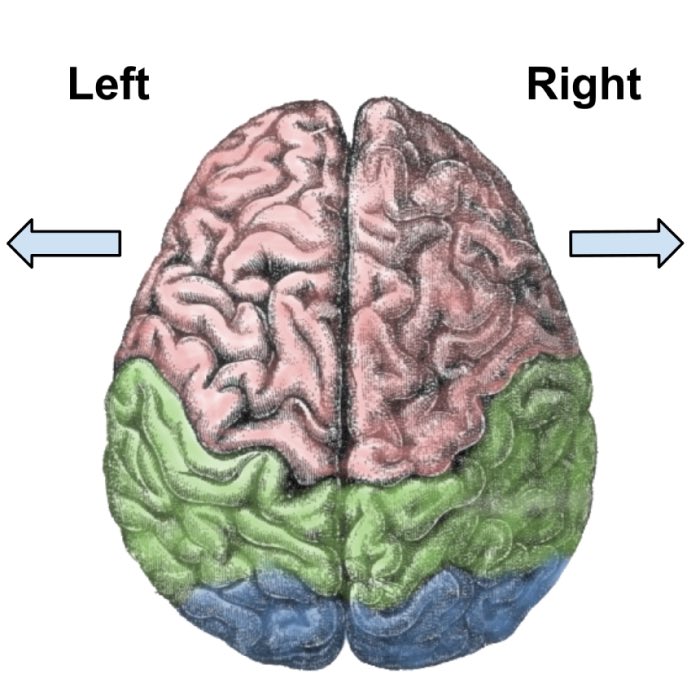


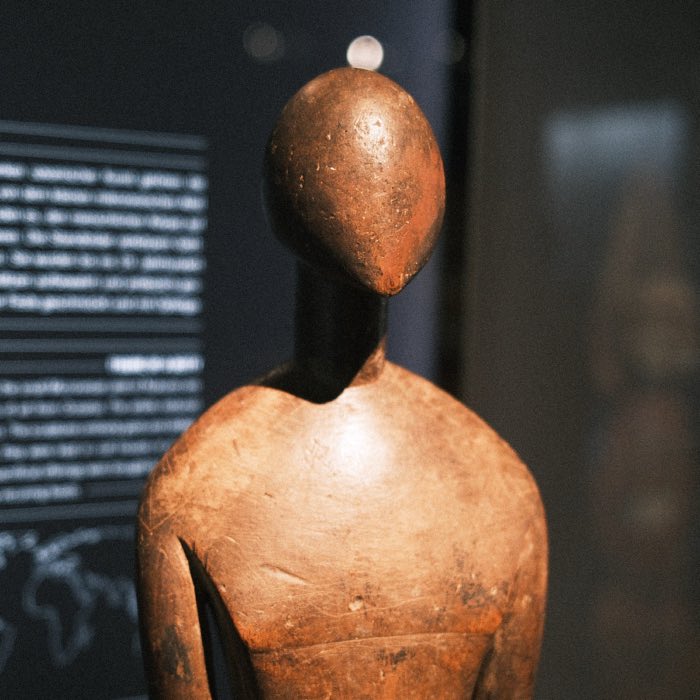


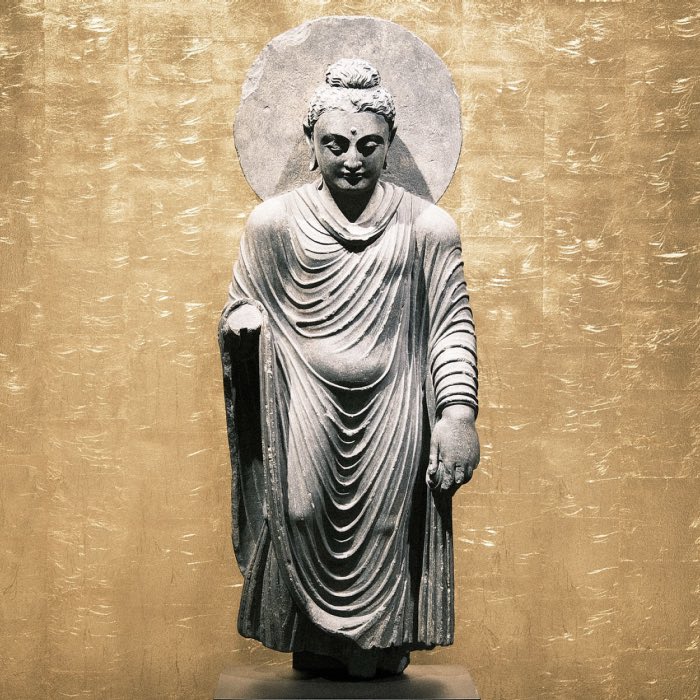


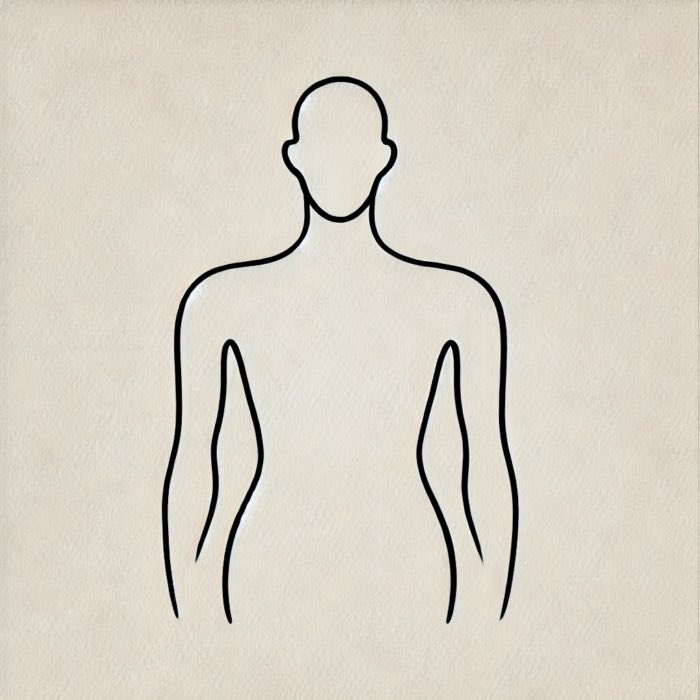
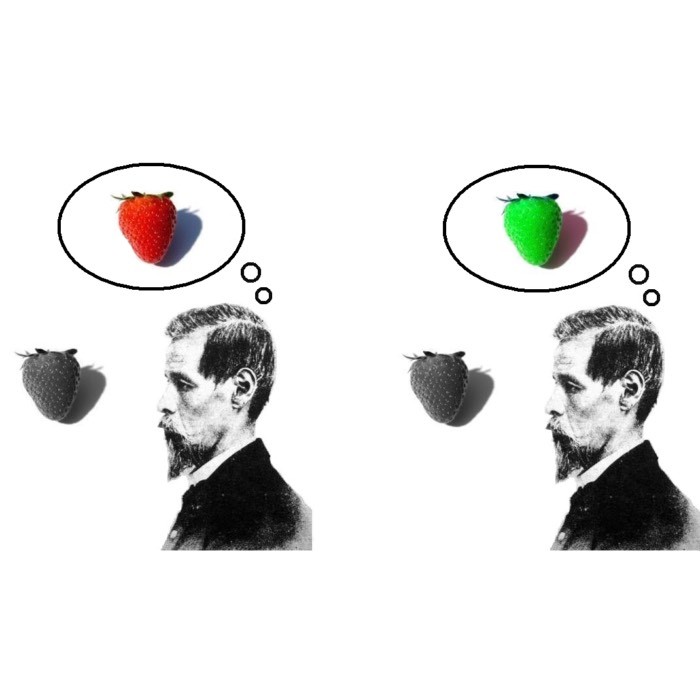


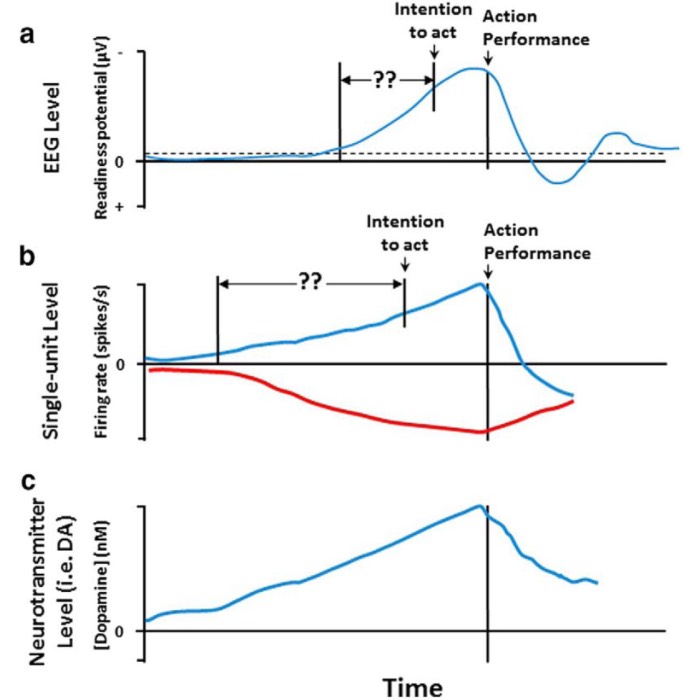

comments